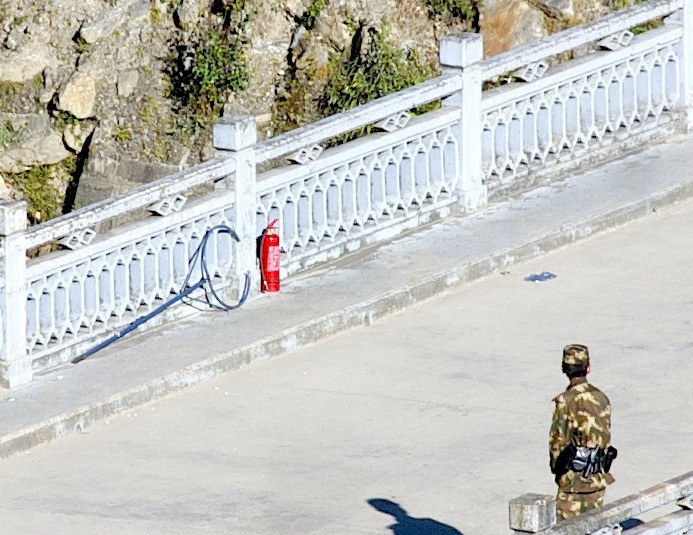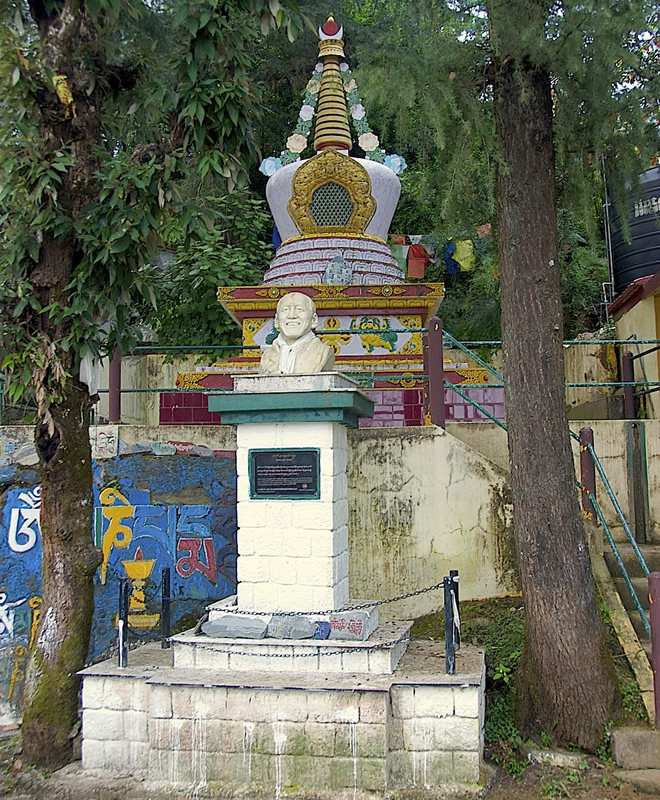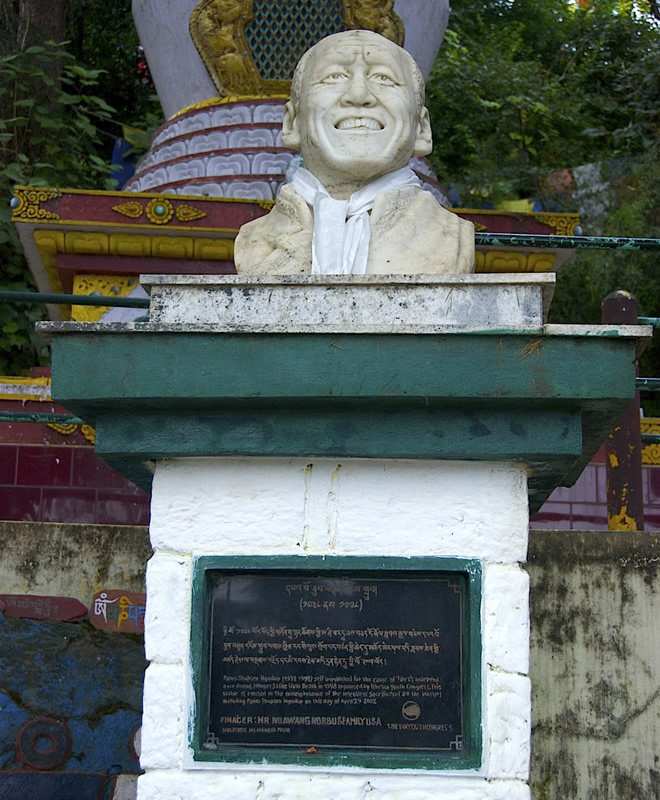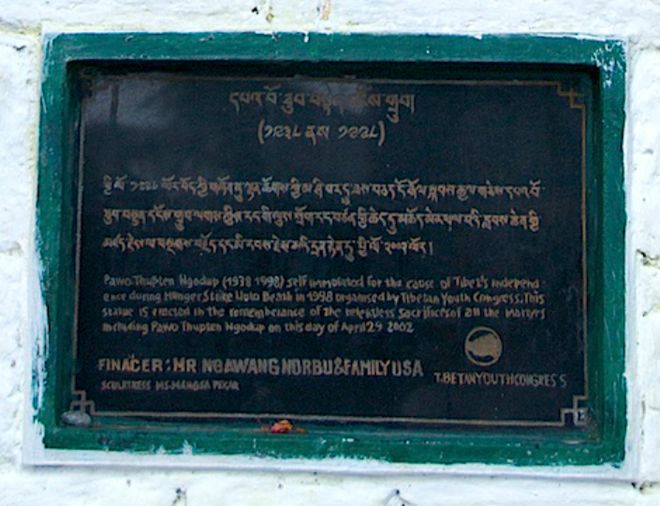Self-immolations of Tibetans, an interview with Thierry Dodin
Considering the recent resurgence of self-immolations by Tibetans in Tibet info-Buddhism.com takes stock one more time of this complex issue. The following is the first part of a comprehensive interview with Tibetologist and TibetInfoNet director, Thierry Dodin, that was carried out in early 2014. The original text has been edited, obsolete passages were deleted and some new passages added to meet the current stand of the discussion. The interview being very long, it has been divided in three different thematic sections to facilitate reading.
Part III: Reactions and Consequences
Q: Do Tibetan politicians, Buddhist teachers, Tibetan activists support self-immolations? Are there voices or initiatives that try to discourage from such drastic means to protest? What is the position of the Dalai Lama? Has his position changed during his life?
A: Nobody explicitly approves self-immolations, and certainly no teacher, that is for sure. But often there has not been much of a clear disapproval either, and yes, to be honest, there have been implicit encouragements, though from nationalist circles only, not from religious circles.
As far as the Dalai Lama is concerned, I believe that once more, he faced an uncomfortable dilemma. People, particularly in the West, often imagine that, given his enormous clout on the Tibetan psyche, any word he utters is immediately followed by universal obedience, but this is a big misunderstanding. The aura of other-worldliness that surrounds very high lamas, and the Dalai Lama particularly, results not the least from the distance they generally keep from expressing clear opinions or open directives. Besides, even where they have political responsibilities, their main role is that of a benevolent presence over people and institutions. For instance, they stay neutral and distanced enough to unite opposing groups of interests. Their role is not to tell people what they have to do or think in practical life or who they have to vote for. In his very own way of expressing things, the Dalai Lama hence opted for not making any statement of approval or disapproval, let alone right or wrong about self-immolations. Instead, he questioned the political usefulness of burning oneself already at the beginning of the waves during a Japan trip. I think this is as far as you can go without hurting anyone.
The Karmapa was in the position of making clearer statements. But even he was very careful that his words would not appear as disapproval. In fact, he appealed for people not to burn themselves, but he did not air a judgment on those who did. He just said their point has been sufficiently made now. Many Tibetans found it difficult to air any opinion that could be seen as disavowing self-immolators, because they knew these people believed to act for the benefit of all Tibetans.
But to be honest, there has been in some circles also an element of quiet approval. Some Tibetans have hoped for some kind of international intervention. Of course, this is very irrational thinking, but here you go.
Q: It seems that there are Tibetans who are rather led by nationalism and who have a “patriotic view” about self-immolations, seeing them as a necessary sacrifice for Tibet’s independence or an improvement of Tibetan rights under Chinese occupation, and who do not seem to consider the tremendous suffering a person who burns himself or herself alive, as well as their families, undergo. If these voices become stronger, they may actually seem to push the young people—who have not much life experience—into more self-immolations, ignoring the consequences this has for them and their families based on such questionable concepts like “heroes” or “martyrs” and based on peer group pressure. Personally I see this rather as a dangerous development. How do you regard these developments? What would be a middle way position and what is the opinion of a majority of Tibetans about the self-immolations?
A: You are certainly right, a lot of problematic things have been said and they mark an unfortunate radicalization. In 1998, disapproval had been very clear in Tibetan society in the case of Thubten Ngodrup. But following that you could see a sort of cult developing around him among more radical Tibetans. They even erected a monument in his honour in Dharamsala, which is ‘worshipped’ regularly. I mean, respecting a person who chose to kill himself and his ideas is one thing, but erecting monuments to him on a holy site (the circumambulation path around the Dalai Lama’s palace) is a completely new dimension. Then, I think it was in 2006, there had been a demonstration in Delhi and one participant, a newcomer from Tibet, attempted to burn himself in the fervour of the moment. The story was not very much publicized, and he managed to burn only his leg. But the leader of the demonstration, a well-known politician, did his best to talk up the young man to a hero, while he actually appeared to be more of an excited young man with a difficult past. The politician in question paid a visit to the hospital, arranged for photos of himself with the young man who set himself on fire and issued a public statement of felicitation.
In contrast, just a few years before that, a book we published with Tibet Information Network (TIN) raised quite a controversy. I was a trustee of TIN at the time and we had long internal discussions on the topic. Our research clearly showed that five nuns had electrocuted themselves to death in a prison in Lhasa. Then, when we published the book, there were angry protests. It was loudly argued that the nuns would not have done anything like suicide, because they would follow the teachings of the Dalai Lama, which forbids any kind of self-suppression. Hence they must have been “killed by the Chinese”. There was a strong social pressure on the witness from whom we had the story, who then pretended not to have told us that. So that seems to show there has been an evolution here towards more acceptance of self-harm and even suicide as a legitimate mean of protest.
But then again, I do not think that the majority of Tibetans have fundamentally changed their opinion. It is just that the more radical are more vocal and get stronger access to the media. They coined terms like heroes and martyrs for the self-immolators. Many in the broader exile society are not entirely happy with that, but there is also some quiet hope that self-immolations might bring international actors to do something about Tibet after all. This is understandable in a way, but to the outside, it appears rather fuzzy and half–hearted and confuses some observers. I am not sure this is very helpful for the Tibetan cause.
Q: But does this have an influence inside Tibet?
A: Inside Tibet, the influence of the exiled high religious dignitaries, particularly those close to the Dalai Lama, continues to be enormous. But otherwise, the impact of political exile institutions and their discourses inside Tibet has been small. However, communication has grown a lot in recent years, in both directions. What happens in a small village in the middle of nowhere high in the mountains, for instance a self-immolation, can be known in the international media within an hour. In reverse, despite all attempts of the authorities to filter information, Tibetans who wish so can be fairly well informed about the world outside, even if the overall picture of the outside world remains incomplete. Because this is so, Tibet-related media like Voice of America (VOA) or Radio Free Asia (RFA) shape perceptions of the outside world in Tibet. What they report about and which terminologies they use do have an impact, and these are strongly influenced by exile concerns and Tibet support groups, no doubt. Therefore Tibetans in Tibet do have a picture of how self-immolations are reported, if they wish. There is this feedback. Hence it does matter how we talk about self-immolations. So there is a responsibility here.
Q: How does the People’s Republic of China address this issue?
A: At the risk of sounding extremely cynical I would say: mainly with fire extinguishers. Rather than searching for a political solution, Beijing has put a lot of efforts into palliative measures. This leads to just plainly absurd developments like the proliferation of fire extinguishers in all public places. Today you don’t see a police patrol in the street that doesn’t carry at least one extinguisher. In Lhasa, Tibetans tut at them by calling them the ‘red brigades’, this being a pun on the extinguishers’ colour and old Communist terminology. I do not think the Chinese authorities themselves believe they can ‘extinguish’ the problem. But this kind of bureaucratic-policing reaction says a lot about the way the country is governed. It is all about limiting the scope of protest, keeping things and people under control, even if they are physically burning. Some weeks ago, I just saw something hardly believable. It seems recently police and paramilitary at spots deemed strategic have been equipped with a new device. It is a kind of giant hook painted in light blue colour that can be used to immobilize a person while keeping him or her at careful distance with a long shaft, i.e. ideal to push a running burning person, like we saw so many, against a wall or on the ground while another police extinguishes him or her. The device is obviously derived from the device you use to catch mad dogs on the street. Again, that says it all, doesn’t it?
 Fire extinguisher and a hook to fetch self-immolators are nowadays standard gear at all security posts in Tibet.
Fire extinguisher and a hook to fetch self-immolators are nowadays standard gear at all security posts in Tibet.© TibetInfoNet, 2013.
But, the development I mentioned before regarding apparently disappearing ‘political education’ campaigns after Xi Yinping’s arrival at the helm is a more serious reaction, even though it has remained singularly unnoticed. It will remain to be seen whether the practice of ‘political education’ has been at last recognized as fully counter-productive and hence banned for good, or whether it is a momentary lapse meant to appease the situation for a while. Or perhaps it is some kind of test—we’ve seen that in the past. But in any case, this is a very significant development, because it indicates lessons have been taken and that is the first step to improvement.
Q: How does the average public in China reacts to Tibetan self-immolations?
A: Well, in the first place, very few Chinese in the PRC know anything about Tibet. They are also not terribly interested. But, yes, there are at least rumours, many people have vaguely heard about Tibetans burning themselves. Those who know more are sympathetic to Tibet and understand the problem. Others find it very difficult to pigeonhole. Most will associate an act of self-immolation with religious fanaticism. Of course this is wrong, but this is due to their upbringing. With that the blame is more likely to be put on the Tibetans and their religiosity than on the system. And with that again, a theoretical possibility to educate the Chinese people about Tibet in this way comes to nothing. At the contrary it has the more likely effect to confirm latent prejudices and rally ethnic Chinese around the authorities.
Q: What are the consequences for the Tibetans in occupied Tibet, the self-immolators who survived and the families and relatives of self-immolators?
A: For most self-immolators, the consequences are quite obvious; they are dead and with that they cannot contribute to anything positive anymore. Yes, a point has been made but at which price and with which result? A hundred and a half precious human lives have been lost, people who could have done a lot, also politically, for Tibet. I simply fail to realize what in the world could be deemed positive about that.
There is very little information about the self-immolators who survived. Hence, I don’t think we can say anything meaningful about that.
As far as their families are concerned, there has been very heavy threats of consequences which were widely publicized. And indeed, if a family member or any other person in the social circle of a self-immolator has in some ways contributed to the act itself, he will be seized and heavily punished. But this is not to equal to reprisals on family members or neighboring villagers. There is normally no such kind of kin liability across the board. Sure, the propaganda machine makes all efforts to scare everyone in the hope that social pressure will deter self-immolators. But once it has happened, the attitude normally changes. They will then try to lure you into dissociation, make you say you disagree with what happened or reward you for saying the Dalai Lama inspired it. This is what I’d expect to be happening. This is the old game of threat, punishment, lure and reward on which the whole system is based. This is what makes that system so pervert.
Still, as a whole, the consequences of the self-immolations for society have been terrible, first of all because of the permanently heightened level of security. In particular, movement has been heavily hindered. Businesses cannot operate properly, tourists were partly hindered to come in the country and those who recently managed to make their way out of poverty found further progress halted. The language demonstrations, as I mentioned, stood under unbearable pressure, which limited their flexibility and hence efficiency. In the same way, many organizations, and activists doing an excellent job for Tibetan society, culture and uplifting of the economic situation, have been blocked in their work. The consequences for the whole society have been overwhelmingly negative and the points made were very quickly forgotten again. Of course, the first videos of people running in flames and of burnt bodies with curled up limbs made a strong impression, but the public gets used to even that. Then also Tibet matters a lot for our sort, but for the wider public it is still very marginal and attention shifts to other places and avenues. This is another sad chapter in the already sad history of modern Tibet. One can only hope that it will be closed once and for all as soon as possible. This is clearly a no-win situation for Tibetans, an impasse. No glorification will change that.

Go back to Part I: Why are Tibetans doing that?
Go back to Part II: Self-immolations and Buddhism




